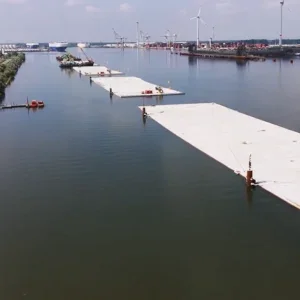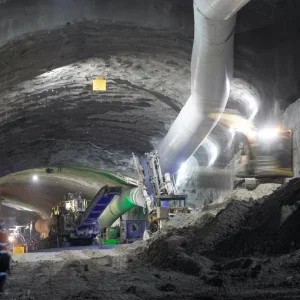This 500 page plus tome is wide ranging and almost comprehensive in its coverage of fire safety in operational road and rail tunnels while mention is also made of fires during their construction. It is without doubt a must-read for all those involved in the procurement, design and equipping of new road and rail tunnels and the improvement and updating of existing ones. Its more practical chapters should also be prescribed reading for those involved in the daily hands-on operation of these facilities.
There are 28 authors drawn from Europe, US and Australia; ranging in experience from academia and research and governmental organisations, through consulting engineers, to the tunnel managers and the fire brigade who in the last resort have to deal with the incidents in the tunnel. With such a cast it is inevitable that the quality of the 23 chapters varies and the overall editing could have been more rigorous and sharper.
As would be expected there is a considerable amount of data on incidents in tunnels often diminished by the omission of vital information. For instance, the San Benedetto Tunnel in Italy (page 76), a road or a rail tunnel? Which road tunnels are twin bores with unidirectional traffic? It also seems pointless including non-fatality incidents in Box 1.1 History of tunnel fires (pages 10-37) when not all the 17 HGV fires recorded in Mont Blanc Tunnel, between its opening in 1965 and the disastrous fire that killed 39 people on 21 March 1999, are included. On the other hand, it is surprising to learn on page 53 that the report of the official investigation of the St Gothard Tunnel is not publicly available. One can only ask why not, particularly if there is even the remotest possibility that it would prevent even a single fatality in the future?
The book is arranged in five parts. Part 1, after dealing with the history of incidents of fire in tunnels in the opening chapter, considers the fires in the Channel Rail Tunnel and the St Gothard Road Tunnel in Chapters 2 and 3 respectively. Most depressing is the realisation that the 11 fatalities in the later tunnel were the result of smoke inhalation and people’s reluctance to abandon their vehicles; more encouraging was the perception that the safety exits to the parallel service tunnel had reduced the death toll.
The prevention of fire and protection from its consequence are considered in the six chapters of Part 2, three of which deal with various aspects of the ventilation of tunnels. It is perhaps an indication of the level of knowledge here that a comment “it is clear that, if an engineering decision has to be made based on estimates alone, the opinion of one or two experts may not be enough” (page 196) can be made.
The theme of Part 3 is tunnel fire dynamics. The opening chapter provides a history of experimental tunnel fires and the remaining four chapters deal with calculation methods and numerical modelling. There is a Chapter on computational fluid dynamics (CDF) modelling and another on control volume modelling of tunnel fires. The strengths and limitations of both experimental and numerical approaches are considered.
The six chapters of Part 4 consider human behaviour and fire safety management. The chapters of Michel Egger, John Gillard and Arnold Dix were particularly good. But despite the realisation that the smoke layer from a fire can obscure signs at a high level, those on Figures 16.5 and 16.6 are still in that position and are not repeated nearer floor level. It is interesting too to learn that lawyers do not – or perhaps pretend not – to understand the concept of risk.
And finally the three chapters of Part 5 deal with emergency procedures in road and rail tunnels and practicalities of fire and rescue operations. The information on the physical limitation of fire fighters is timely and it is sobering to note that some have already died in road tunnel fires.
This is an admirable first effort but it is disappointing that the problems of fires in low headroom road tunnels has not been addressed; something is needed also on the response times of ventilation systems particularly if these need to be reversed.
However there is no doubt that this handbook provides comprehensive coverage of fire safety in road and rail tunnels and provides a solid foundation on which future editions can be based.
Review by: Dr Myles O’Reilly
Chairman
T&T International Editorial Advisory Board







